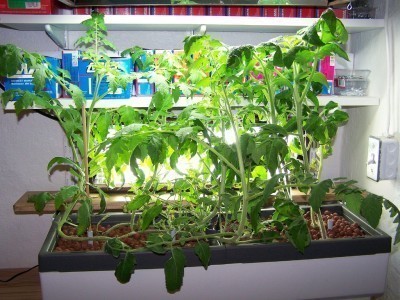






When using hydroponic gardening methods indoors, light can be provided through a bright window or beneath suitable grow lights. In general, the type of light used and how much is needed falls on the gardener and types of plants grown. The light source, however, must be bright enough to trigger flowering and fruit production.
Suitable temperatures with sufficient amounts of humidity and pH levels are equally important. There are many hydroponic gardening kits available to help get beginners started. Generally, if hydroponic gardening indoors, room temperature is adequate for most plants. Humidity levels should stay around 50-70 percent for optimal plant growth, much the same as for growing houseplants.
With hydroponic gardening, pH levels are extremely important and should be checked regularly. Maintaining pH levels between 5.8 and 6.3 is usually suitable for most plants. Suitable ventilation is another important aspect of hydroponic gardening and can be easily accomplished with ceiling fans or oscillating ones.
Nutrients are provided through specifically designed hydroponic gardening fertilizer and water. The nutrient solution (fertilizer and water) should always be drained, cleaned and refilled at least one or two times a month. Since plants grown hydroponically do not require soil, there is less maintenance, no weeding and no soil-borne diseases or pests to worry with.
Plants can be grown using a variety of mediums, such as gravel or sand; however, this is merely for anchoring the plant. The continual supply of nutrient solution is what keeps the plants alive and healthy. There are also different methods used for providing this nutrient solution.
Two other common methods for providing nutrient solution to plants are also used in hydroponic gardening, the Nutrient Film Technique (NFT) and aeroponic method. NFT systems provide a continual flow of nutrient solution without the use of a timer. Rather, the roots of plants hang down in the solution. The aeroponic method is similar; however, it requires a timer that allows the roots of hanging plants to be sprayed or misted every few minutes.
Nearly anything, from flowers to vegetables, can be grown with hydroponic gardening. It’s an easy, clean, and effective method for growing plants, especially in limited areas. Hydroponic gardening adapts well to most indoor settings and produces healthier plants with higher quality yields.
Copyright © www.100flowers.win Botanic Garden All Rights Reserved